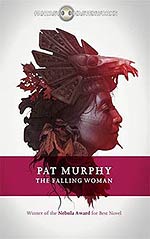
![]() charlesdee
charlesdee
6/22/2013
![]()
When one of the local workers on a Yucatan archeological site breaks his ankle, the local hospital fixes him up but his mother, the cook for the archeological team, insists that the localcurandera be brought in to check him out as well. This old woman also wants to meet Elizabeth Butler, the middle-aged and well-known leader of the team. She identifies Butler as a witch.
Butler is not bothered by this opinion. She can even appreciate it. All her life she has lived with shadows of the past inhabiting her world. This has made her an excellent archeologist, although on this dig for the first time one of these "shadows" has begun to speak to her. But Butler knows that a witch has power, which is better than being crazy, a diagnosis that removes your power and puts you under the power of others. She has been considered crazy in her life as well. Years before, when she saw no way out of a marriage that was suffocating her, she slit her wrists. This suicide attempt got her institutionalized. When she got out, she abandoned her husband and small daughter, went back to school, and began the life she has now.
The unannounced arrival of Diane Butler, the daughter she abandoned twenty years before, initiates the action of Falling Woman. Diane's father has died and her married lover has called an end to their affair. She has come to Dzibilchaltun to reconnect with her mother, for reasons she cannot clearly articulate even to herself. She finds an awkward place among the graduate students and other faculty who work the site, and she too begins to see shadows of the past.
There are few ways out of the fantastic elements of the plot for readers resistant to the reality of what Diane and Elizabeth experience. Bad luck can be just that and have nothing to do with the fact that a particular day is under the sign of the jaguar in his night aspect. Diane's earliest visions come after smoking some of the very good local weed. Elizabeth Butler has developed a serious fever with the oncoming of the rains and she could also be crazy. She admits as much and insanity could be genetic. But Murphy's story is not a game with the reader over what really happens.
Elizabeth Butler is in communication with a priestess of the moon goddess who survived a sacrificial plunge into the deep cenote at Chichen Itza 900 years ago. This vision has a message, or more like an demand, to pass on to Elizabeth about blood sacrifice. Elizabeth understands the agony of this being, but should her allegiance be to the living or the dead? Murphy uses this question to build a suspenseful story that is also a realistic depiction of the back-breaking work of archeology and the experience of young Americans in Mexico in the 1980's.
http://www.potatoweather.blogspot.com